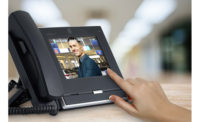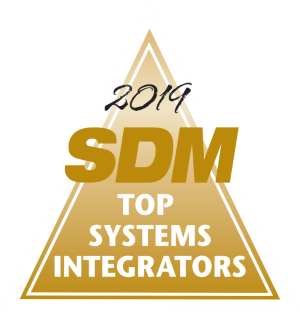There was nothing more evident at the recent Consumer Electronics Show (CES), held in early January in Las Vegas, than the idea that home appliances are getting smarter, more networked and go way beyond “lights, locks and thermostats” today.
In fact, Dinesh Kithany, senior principal analyst, home appliances and consumer electronics for research firm IHS Technology, Englewood, Colo., wrote in a recap about CES, “Based on various demonstrations and announcements made at CES 2016, I would re-christen the term “Internet of Everything” to “Internet in Everything,” as companies are now excitedly including Internet connectivity into every product they can.”
The list of connected appliances ranged from refrigerators to washing machines, air conditioners, vacuums, and even a smart bed with anti-snore and voice command features. But while Kithany said connectivity is the new mantra, it sometimes comes at the expense of practical use, convenience or peace of mind, which is potentially very good news for the security dealer.
Cool Versus Useful
While the “cool factor” may be more talked about, when it comes down to it, it is the truly useful products that get the most play, says Greg Roberts, vice president of marketing, Icontrol Networks, Redwood City, Calif.
“We talk to consumers constantly to get feedback on various features and functions of an interactive security solution. We are finding that offerings that incorporate video monitoring, thermostat control, lighting and door locks are very well received. The ability for those features and devices to interact with each other to make a smart home smarter is what they embrace about these particular solutions. We find the more they use them, the more reluctant they are to ever give them up.”
Rob Post, CPA, owner, Post Alarm Systems, Arcadia, Calif., agrees. “Our customers want a phone app that can control their alarm system, but they want it to be simple and easy to use,” he says. “They like the idea that we can add lights, locks and thermostats, but they expect an app.”
John Pirrie, director of marketing, SecureNet Technologies, Lake Mary, Fla., calls many of the newer offerings such as those on display at CES “fads,” adding that some are more useful than others. “As far as consumers go, it is hard to tell what is next. I never believed in the Apple Watch. We have a solution for it, but I feel like it generally hasn’t really taken off. 3D television sets were just an over-reaction to a good movie. I tend to be a little skeptical sometimes.”
There is good reason for this, particularly from experienced security providers, says Tricia Parks, CEO and founder, Parks Associates, Dallas. “Professional monitoring is an old industry. The smart home is young…. When I say it is young, it really is and there are so many pieces to it. I went ahead and got some new lighting control for my home. I have a lamp I turn off every night before I go into the bedroom. So I [put a module on and] automated this to go off at an average time of 10:00 p.m. However, now my switch doesn’t work anymore. If I have a night where I want to go to bed at 11:00, I can’t make that lamp go on and off unless I get my smartphone. The result was that one night I pulled the module off because it caused as many problems as it solved. The application was too young. It needs to be able to work with or without the switch any way I want it.”
Parks and others see more promise in technologies that “learn” patterns, such as thermostats that can adjust to situations such as cooking in the kitchen or changing sunlight, or the Amazon Echo.
“There is so much cool, innovative technology coming into the home now,” says Jay Kenny, senior vice president of marketing, Alarm.com, Vienna, Va. “Historically we had a panel on the wall. Then we had the mobile app, but still had to pull out the phone. Now the Amazon Echo is voice controlled. I think all this adds up to making the smart home more useful to consumers. I really think making what is cool technology into something that is a meaningful service will really help the security dealer’s business and the Echo is a great example. It is a new device with a new interaction. People had cell phones before, and then we unlocked the ability to access them. Now we are starting to do that with other devices.”
Pirrie adds these consumer electronics can represent a potentially huge opportunity for the dealer. “There is a big industry of self-monitored or off-the-shelf solutions that seem to have sparked a lot of interest and increased the size of the industry. It is a new potential revenue stream that a traditional dealer either hasn’t tapped or would like to tap into more.”
Manufacturers in the home security and automation, or smart home space, are not only aware of this — they are actively developing and making available several options to help dealers do just that.
Easier Installation & Operation
Greg Rhoades, automation director of marketing, Leviton Manufacturing, Melville, N.Y., says the DIY and consumer devices have limitations that allow savvy installers to market a system that is more professionally linked and integrated for smooth operations.
In addition, several manufacturers offer easy upgrade kits for their existing non-interactive panels that, when combined with the 2G Sunset that will require dealers to go back to many of their existing customers (see “The Rising Sunset” on page 90), can truly help dealers upsell and convert existing customers to these newer RMR-rich features.
“Our StarLink radio can go on anyone’s control panel today and give them the capability via a smartphone app to remotely arm and disarm their security system,” says Dave Sheffey, senior vice president of sales, northern region, Napco Security Technologies, Amityville, N.Y. In addition, this month at ISC West, Napco is launching some new radios to do more complete interactive services. “The good part is [the dealer] will be able to do it right through the radio and add interactive services. In that way it allows us to go backwards and by adding a radio to the account, add to their RMR and charge more for interactive services.”
Alarm.com offers a system enhancement module that can attach to a legacy panel and take over or add devices via cellular or Z-Wave, Kenny says. “There is an increasing familiarity with smart home security as a service and this is much easier to install, which has been a barrier before.”
The removal of that barrier is the biggest recent change in the industry and for the dealer, adds Dave Mayne, vice president of marketing, Resolution Products Inc., Hudson, Wis. “We make takeover sensors that are compatible with all the [major] systems on the market that allow dealers to sell new services without having to replace all the sensors. We also make retrofit gateway modules to take security systems that were installed 20 years ago and add smartphone control and home automation. We have a new wireless security panel called Helix that can add a translator right at the panel. It doesn’t take any tools and just sits on the desktop and plugs into an Ethernet port. It allows dealers to differentiate themselves with lower account creation costs while giving them a big uptick in delivering interactive services.”
The next step, Mayne says, is building into the panel other products that follow IFTTT (If This Then That), such as the BeON lightbulb, which learns user behavior. “We want to feed that to our interactive partners so they can build in those learning modules. That is the mindset [now]. If all you are going to do is make the phone a remote control, that is not enough anymore. It has to become intelligent.”
Shawn Welsh, senior vice president of product line management and marketing, Telguard, Chicago, agrees. “One of the big things the security industry hasn’t really played up as much to this point is that they have been about a curated ecosystem in a solution. You buy a turnkey interactive solution provided by a security manufacturer. Even if it is open like Z-Wave, your entry is through a common portal that starts with the security panel. But if you go into Best Buy or any of these places, the big trend is an explosion of innovative home automation products that work as point solutions. The Nest thermostat isn’t in an ecosystem. It just does thermostat stuff really well and has APIs that allow it to be used with other systems. You can make a Nest thermostat and a Hue lightbulb work together.
“Another big trend that the industry hasn’t played that much in is these point solutions that are tied together through other architectures like IFTTT. That is free and it ties all these together into an integrated solution. We have created products that can operate in the security ecosystem or as a point solution for both DIY and professionally installed security. So we allow interactive arming and disarming, which is our point solution, but then we allow you to connect to IFTTT by going to Best Buy and doing what you want with those other point solutions.”
Telguard’s Home Control Flex essentially makes the security system just another smart product, Welsh adds. It allows end users to integrate more than 170 smart home products and Web services with their security system using the free IFTTT interface.
SecureNet uses the Resolution Products Helix in its offering, Pirrie says, adding that it is another great solution for the 2G Sunset customers. “Dealers can install it for under $100 and use wireless sensors around the house… and open up capabilities for upselling and creating revenues by selling lights, locks, thermostats and video. It is an easy way to sell to the low hanging fruit.”
Then, SecureNet also offers a direct VPN connection to the central station from the home. “Our alarm transport is immediate. What we do is install a virtual receiver in many central stations. We also have redundancy in our cloud platform. The solution allows dealers to go in with a cheaper, more cost-effective IP solution when making installs.”
Roberts says Icontrol Networks’ most recent offering was designed to help the dealer retrofit and add services more easily and at the same time. “The beauty of it is it is designed to work with the leading home security panels in the industry… with a minor swap out of the security panel or in some cases just a module in the panel. It offers dealers the ability to add home automation features to that system seamlessly, then have the ability to add video monitoring and door locks and thermostat control all on one system so the end user has one application to go to and control everything in their home including security.
“This makes it simple and easy for dealers [of all sizes] to enhance their offering and enables them to enhance their revenue with very few pain points,” he adds.
Open interface is what drives Qolsys products, says Mike Hackett, senior vice president of sales and marketing and co-founder of the San Jose, Calif.-based company. “I think we are seeing folks focus a little more on open security and interactive services. Technology is getting better and better and we have a lot of robust tools to support home automation devices.
“Our point of view is we want an open platform and to be able to integrate and talk to all these new devices. What is the next Nest? We won’t know until the market tells us, so having that openness to partner and integrate will be really important.”
Whatever the method to get there, dealers now have more ways than ever to approach the fast-changing world of interactive services. And for those that take full advantage of these new ways to upgrade and upsell, the payoff could be big.
“We can’t get to the point where there are 15 apps on the phone to talk to various elements,” says Pam Petrow, president and CEO, Vector Security (SDM’s 2015 Dealer of the Year), Warrendale, Pa. “We have the potential to play a neat role to consolidate that for them, just like we do on alarms, to be a clearinghouse, incorporate this and do analytics, or redefine our monitoring services. This is critical because consumers will quickly become overwhelmed. They don’t want to hear from their refrigerator. We can do the analytics for them and tell them just the things that are critical.”
Capitalizing on Opportunity
For professional security dealers, the time may be now or never to take advantage of what the market is providing. Most, if not all, dealers today do offer some form of interactive services, but not all are taking it to the level they could, or perhaps should, Tricia Parks of Parks Associates says.
“The interactivity for the security system itself as we have known it will be table stakes going forward. Security systems will have the ability to check status, receive alerts and other basic interactivity from the system itself. But that is an added benefit, not necessarily an added revenue. When you get to adjacencies like energy, lighting and cameras, I think those are what are, in large part, responsible for tipping over a very hesitant group of users, and a cause of growth,” she says.
Dealers agree that interactivity is table stakes today. “Almost every sales call we go to they ask about home automation or remote connectivity applications,” says Marvin Smith, president, Orlando Emergency Signal, Orlando, Fla. “They all want the app. Almost immediately they ask if they can control it from their phone. I don’t even know the last time I sold a system without [Honeywell] Total Connect.”
Most alarm companies offer interactive services today, but not all are successful at it, says Rob Post of Post Alarms. “We include interactive services on all of our new intrusion system installations, but then we take it a step further. All sales reps walk each customer through the app, showing them how to set it up, how to use it, etc. We want them to feel comfortable using it because we find more times than not that as the customer starts using it, they actually want to add other services to it, like locks and lights, not to mention cameras.”
Michael Flink, president of ADI Global Distribution, Melville, N.Y., agrees that the majority of dealers today are offering connected services in some form or fashion. The trick, particularly for the smaller dealer, is to do it in a way that is beneficial for both the customer and the dealer. “There is a high level of interest from the consumer, but I think there is a systemic or structural challenge with the installers being able to deliver the complete solution. They may not be familiar with HVAC and have a hesitancy to replace thermostats, or need a plumber’s license to install a water shut-off valve.
“It comes down to a structural business model challenge. We have been focused on the RMR model and the quicker we can do an install, the more profitable it is, but there is not as much profit for the dealer today in setting up lighting scenes.”
But others see it differently. Icontrol’s Greg Roberts calls interactive services a “Trojan Horse” that allows the dealer to enhance the relationship over time.
“I think it is critical,” says John Pirrie of SecureNet Technologies. “Every dealer we speak to is excited about the smart home. The traditional security space has been built around RMR and it opens up another opportunity for customers to not only get more invested in the service because you are making the security system the center of their smart home, but to add a little more sizzle to their product offering.”
Interactive services ultimately make the customer a better customer, a longer customer, and a stickier customer, says Rory Russell, owner, Acquisition and Funding Services (AFS), Katskill Bay, N.Y. “I recently called a local alarm company I have been with for 15 years and asked them to put in a door lock so that I could open my door remotely. The local guy didn’t want to do it. I went with a different alarm company that would do it. If you don’t know how to do it, learn how to do it because people will ask you for thermostats, or remote cameras or doorbells.”













